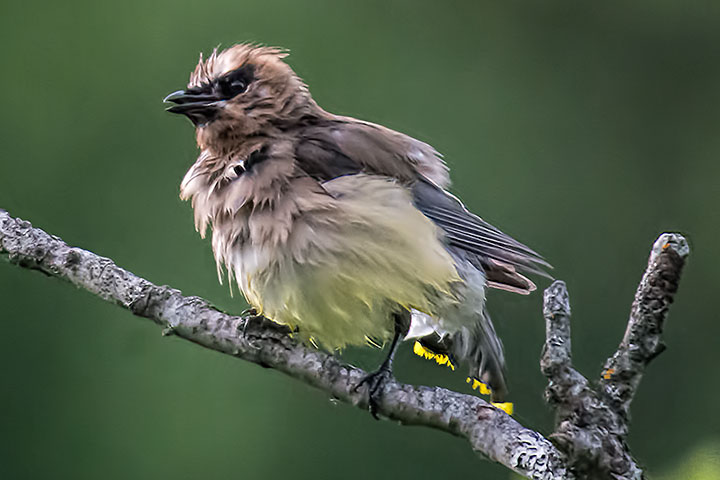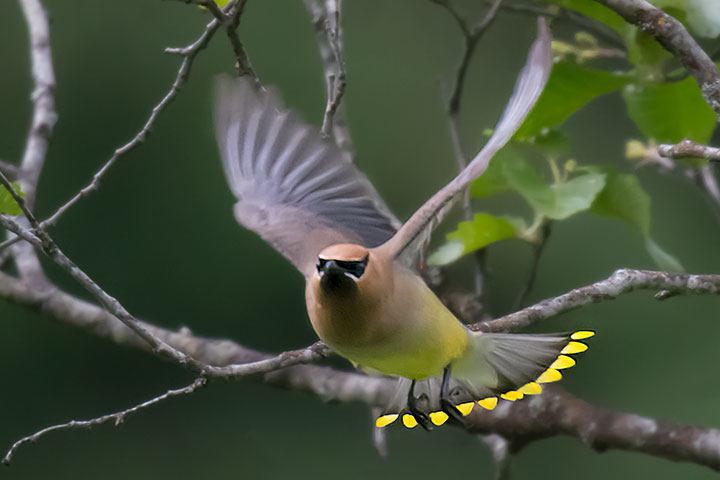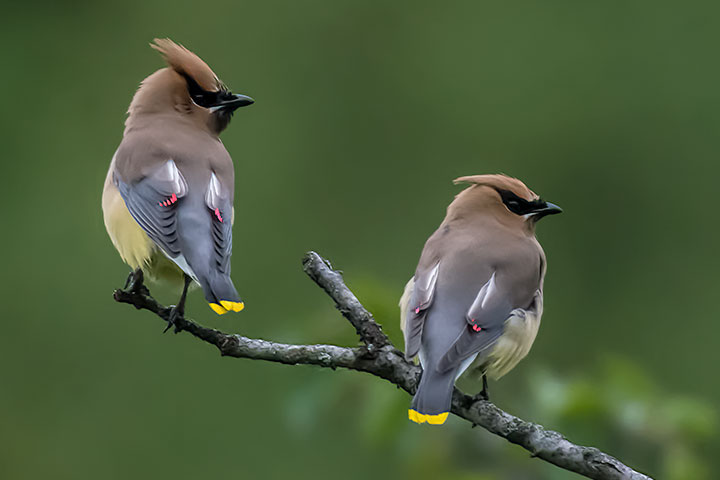Locally, we get two species of waxwings: Bohemian Waxwings in the winter; Cedar Waxwings in the summer. Bohemians course about in large flocks (see, waxing alliteratively, Bohemian Waxwings). Cedars are here to breed and so don’t move about in the same numbers.
The first Cedar Waxwing spotted yesterday was a fledgling. It lacked the silky feathers of an adult.

An adult flew in.

Cedar Waxwings are not seen locally in large flocks, but a few hang out together. Easily seen are the red waxy tips to the wing feathers after which waxwings are named.


Alistair
The bottom picture is absolutely stunning …
The detail almost makes are “birder of a non-birder” …
Thx Rob
Rob, thank you. Certainly, a delight in beauty is a component of birding.
Lovely photos! The first photo is also an adult, I suspect freshly bathed. The juveniles would look more dingy with faint streaking and lack the yellowish tones on the belly and they would keep that look until after their first prebasic molt which would happen later in the year, cheers, max
Wonderful Waxwing pair! Hope you’re well, Alistair.